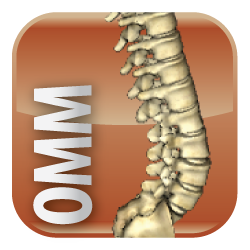Treat All Levels of Illness

Between 1995 and 1999 I studied Physical Medicine and Rehabilitation at the University of Michigan Medical Center in Ann Arbor. I had relatively little osteopathic experience at the time. As I encountered patients with many types of illness and severity level, I was continually reminded of the breadth and depth of osteopathy. The rehabilitation model tries to maximize the function of the patient, rather than the typical allopathic model of pushing against the disease process.
Dr. Jealous notes that in Dr. Sutherland’s writings, he “observes that Primary Respiration organizes form and function as well as repair and repositioning.” It began to dawn on me that the osteopathic model and the rehabilitation model could work together. With this thought in mind, I began my practice of Osteopathic and Rehabilitation Medicine at St. Mary’s Spine Center in San Francisco in 1999.
For four years, until 2003, I worked alongside Jerel Glassman D.O., also an osteopathic physiatrist. Dr. Glassman taught me a lot about how to artfully blend the osteopathic and rehabilitation models. Whether someone is seriously ill or injured, or is just in for a check-up, the principles of treatment remain the same.
Dr. Jealous notes that in Dr. Sutherland’s writings, he “observes that Primary Respiration organizes form and function as well as repair and repositioning.” It began to dawn on me that the osteopathic model and the rehabilitation model could work together. With this thought in mind, I began my practice of Osteopathic and Rehabilitation Medicine at St. Mary’s Spine Center in San Francisco in 1999.
For four years, until 2003, I worked alongside Jerel Glassman D.O., also an osteopathic physiatrist. Dr. Glassman taught me a lot about how to artfully blend the osteopathic and rehabilitation models. Whether someone is seriously ill or injured, or is just in for a check-up, the principles of treatment remain the same.
